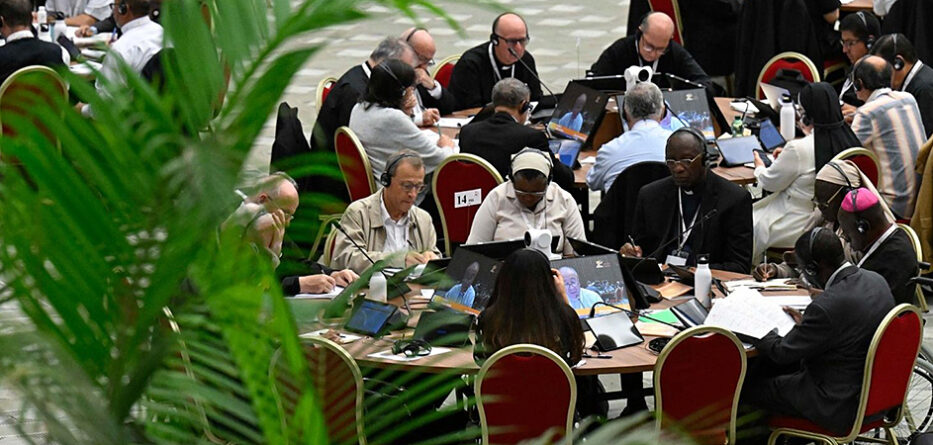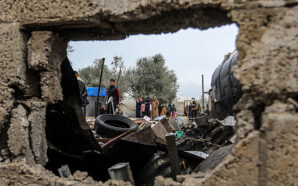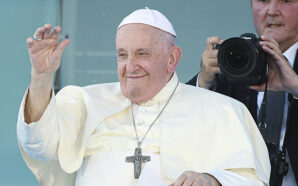The Synod assembly on the future of the Church, which took place in Rome this past October, marks a truly radical transformation for Catholicism
Comments following the Synod assembly, which took place this past October, oscillate between enthusiasm about the experience to disillusionment about the lack of tangible results. They include harsh or fearful criticism from people confronted with anticipated or imagined changes. What should we make of all this?
Let’s take a look at three symbols that mark a decisive step forward. As we know, a symbol is an outward sign that represents an invisible reality.
In the theological tradition, lex orandi (the way we celebrate) and lex congregandi (the way we gather to govern) express the faith of the Church (lex credendi). These symbols, then, are not mere details. They speak to the meaning of the action and reveal a horizon, perhaps better than the texts themselves.
Tables mixing bishops with laypeople
The most visible symbol that burst forth in numerous photos relayed millions of times was how the assembly (ecclesia in Latin) was organized in a totally new way. There were large roundtables that mixed people from all ministries and states of life, something both functional and symbolic. And they were all on the same level with the exception of the pope’s slightly raised table, which included him and Synod officials.
We have seen these images, but have we fully grasped what is meant here? In the words of the Second Vatican Council’s Constitution on the Church, we have seen that “if by the will of Christ some are made teachers, pastors and dispensers of mysteries on behalf of others, yet all share a true equality with regard to the dignity and to the activity common to all the faithful for the building up of the Body of Christ” (Lumen gentium, 32).
If this is the expression of a lex congregandi, the many local ecclesial meetings linked to governance will have to draw lessons from it. And, in some places, this will demand substantial modifications.
The symbol that was least noticed in the media is nonetheless the oldest and most essential for faith. At the beginning of the Synod assembly, the Book of the Gospels was carried in procession and enthroned on the platform of Paul VI Hall. This rite was first performed at the Council of Ephesus in 431. Both the chronicle of the time and the commentary by St. Cyril of Alexandria record and comment on this rite. “The holy Council gathered in the holy Church of Mary and made Christ, as it were, one of its members and the head of the synod. The Holy Gospel was indeed placed on a holy throne,” wrote Cyril in his Apologeticus ad imperatorum.
Admittedly, the Book of the Gospels was a little lost on the great dais of Paul VI Hall, without a candle and with only a large icon of Mary for distant company. But the Book of Gospels presided and, through it, Christ himself. This conviction of faith has always been rooted in Jesus’ promise: “For where two or three meet in my name, I am there among them” (Mt 18, 20).
The San Damiano Cross
The most discreet symbol illuminated the assembly with the spiritual and reforming gleams of Church history, both to exhort and to give hope. A reproduction of the San Damiano Cross was placed at the entrance to Paul VI Hall, symbolically welcoming the participants with its human-sized 1.90-meter height. This cross played an essential role in the conversion of St. Francis of Assisi and his subsequent mission.
According to the first Vita, he heard the cross say to him: “Go and repair my house which, as you can see, is falling into ruins.” This is so well known that anyone entering for a session could hear himself or herself say these words. And in case it was necessary, this crucifix was commented on during the ecumenical “Together” prayer vigil preceding the session proper.
Two words resonate here about “my home”, Christ’s home. The “ruins” is more than paradoxical. Christianity numbers around 2.7 billion people, of whom 1.37 billion are Catholics. So what ruins are we talking about? Certainly the internal state that is affected by the loss of attractiveness and credibility, of which the abuse crisis is a major cause. “Repair” is an ambiguous commandment.
In a positive way, it calls for immediate action. But it could imply a goal that would be a return to a previous state to function as before, if we take the analogy of a boat or a car. But that’s not what we’re talking about. We’re talking about a profound change, commensurate with the epochal shift underway.
The scale of the process underway
These three symbols allow us to perceive the extent of the process undertaken. There were in fact more than just formal, concrete decisions. The transformation is theological, spiritual and… radical. This may reassure those fearful of a parliamentary drift. The presidency of the Book of the Gospels alone placed the assembly in a context fundamentally different from a consultative or deliberative body proper to democracy.
The transformation also opens up a very clear horizon for all those who hope for a Church ever more capable of hearing the cries of suffering humanity and offering it a path of faith and love. The first session of the Synod assembly thus revealed the profound meaning of synodality. The second session, in October 2024, will focus on the concrete and canonical implementation of the milestones set.
Arnaud Join-Lambert is professor of theology at the Catholic University of Louvain (Belgium).
Reproduced with permission from La Croix International.








